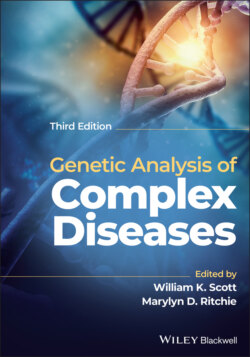Читать книгу Genetic Analysis of Complex Disease - Группа авторов - Страница 48
Sickle Cell Anemia
ОглавлениеSickle cell anemia, an autosomal recessive disorder with a carrier frequency in African Americans of approximately 1/12, is a classic example of a point mutation leading to disease. Sickle cell anemia results from a single nucleotide substitution in the HBB gene of an adenine to a thymine, which changes the resultant amino acid from glutamine to valine at codon 6. The pathogenic variant (mutation) leads to the formation of an abnormal form of hemoglobin, hemoglobin S, which causes the red blood cell to take on an abnormal form that resembles a sickle. This causes red blood cells to break down prematurely, leading to anemia. In addition, the sickled red blood cells may accumulate in blood vessels and lead to episodes of severe pain. Interestingly, the carrier state for sickle cell trait may lead to a selective advantage in certain environments: carriers have a resistance to malaria that is useful in tropical climates, which explains the high carrier rate in certain populations.
